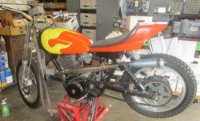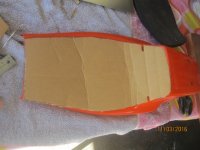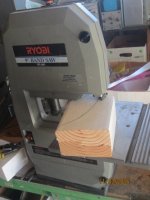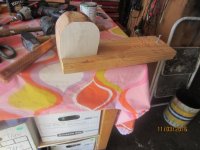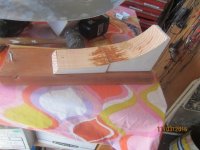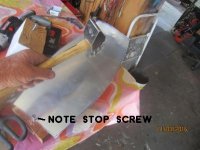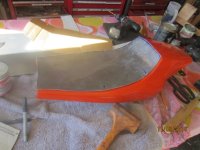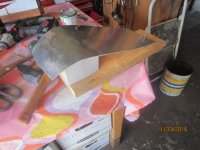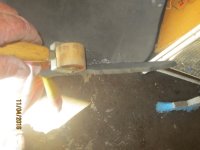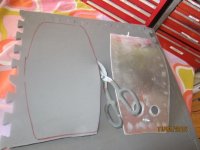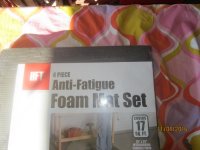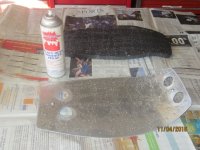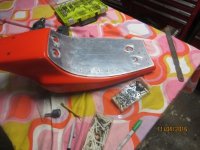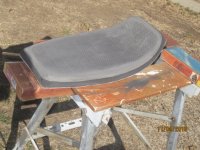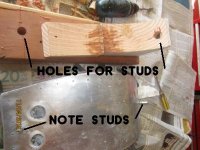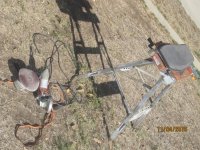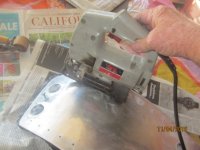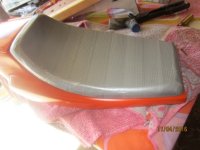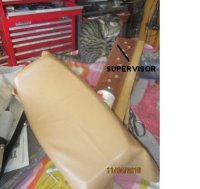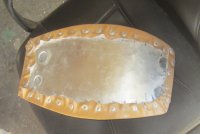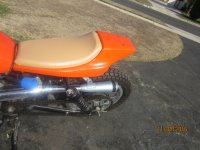Hi All,
I am almost finished with my Street Tracker project. I promised to do it all myself, with no professional help. As you can see it is a unique project. So far all I have farmed out is the welding, which my brother did.
The seat is from Ryca. I also bought their foam, which in retrospect was a ripoff. I intended to do the upholstery at home. I used some vinyl left over from another project. It came out well, not professional quality but I can say I did it myself.
The seat will be a simple affair, no sewing or seams, pleats, etc. I took step by step pictures and will show you how to do it. The total cost for all materials and supplies, including glue, pop rivets, foam, studs, foam etc was less than 40 dollars. You wanna see how I did it?
John in Kalifornia
First pic is of bike before upholstery. You can see the foam on top of the fiberglass seat. I was just gonna glue it to the base but that looked tacky.
I am almost finished with my Street Tracker project. I promised to do it all myself, with no professional help. As you can see it is a unique project. So far all I have farmed out is the welding, which my brother did.
The seat is from Ryca. I also bought their foam, which in retrospect was a ripoff. I intended to do the upholstery at home. I used some vinyl left over from another project. It came out well, not professional quality but I can say I did it myself.
The seat will be a simple affair, no sewing or seams, pleats, etc. I took step by step pictures and will show you how to do it. The total cost for all materials and supplies, including glue, pop rivets, foam, studs, foam etc was less than 40 dollars. You wanna see how I did it?
John in Kalifornia
First pic is of bike before upholstery. You can see the foam on top of the fiberglass seat. I was just gonna glue it to the base but that looked tacky.


